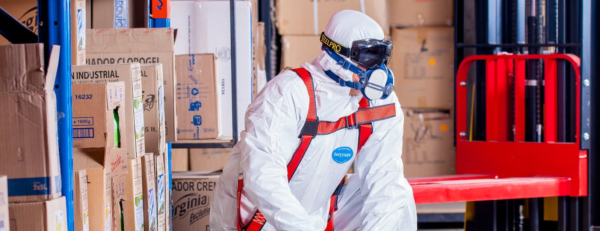WELDING GLOVES: The Ultimate Guide to Choosing the Best Pair for Your Job
- THE IMPORTANCE OF WELDING GLOVES
Welding is a dangerous process that can pose serious risks to workers if safety precautions are not taken. One of the most important pieces of personal protective equipment for welders is welding gloves. Welding gloves are designed to protect the hands and wrists from the potentially severe and prolonged exposure to heat, radiation, and sparks that can result in numerous injuries. Here are some of the risks that can occur when welding gloves are not worn:
1. The heat from welding equipment can easily burn unprotected hands, causing severe discomfort and pain such as blisters and scarring.
2. The high voltage generated by welding can electrocute an unprotected hand, causing serious injury or death.
3. Proximity to welding sparks and radiation can increase the risk of dermatitis, skin cancer and other serious health problems.
In summary, welding gloves are essential for the protection of welders and other workers from the range of hazards that welding imposes. They are designed to withstand high temperatures and provide adequate protection of the hands and wrists while minimizing exposure to potential hazards.
- MARKET FOR WELDING GLOVES
The market for welding gloves is expected to experience substantial growth in the coming years due to the increasing demand for protective equipment in various industries. The construction, automotive, and manufacturing industries are some of the key end-users of welding gloves. Factors such as the growth of these industries, the rise in industrial automation, and the implementation of strict safety regulations are driving the demand for high-quality welding gloves. Additionally, the market is being propelled by the introduction of innovative materials, including heat-resistant fabrics and advanced coatings that enhance the durability and performance of welding gloves.
- SELECTION
When selecting the appropriate welding gloves for the type of welding and level of protection required, it’s important to consider the following factors:
1. Type of welding: Different welding techniques require different types of gloves. For example, TIG welding gloves are typically thinner and more flexible, while MIG welding gloves tend to be thicker and offer more protection against sparks and heat.
2. Material: Welding gloves are typically made from leather, but the thickness are vary. For example, cowhide gloves are thicker and provide more protection, while goat or pigskin gloves are more flexible and better suited for TIG welding.
3. Size: welding gloves should fit snugly and comfortably.
4. Cuff length: The length of the cuff can affect the level of protection provided, with longer cuffs offering more protection.
- MAINTENANCE
Proper care and maintenance of welding gloves is also important to ensure optimal performance and longevity. Here are a few tips:
1. Keep gloves dry: wet gloves can become stiff and lose their effectiveness.
2. Clean gloves regularly: Use a soft brush or cloth to remove dirt and debris from gloves.
3. Store gloves properly: Store gloves in a cool, dry place away from direct sunlight and heat sources.
By considering these factors and properly caring for your welding gloves, you can help ensure both their longevity and optimal performance for any welding job.
- MATERIALS AND PROTECTION STANDARD
Welding gloves are constructed using a variety of materials, including leather, Kevlar, Nomex and cotton. Leather provides excellent heat protection and durability, while Kevlar and Nomex offer exceptional heat and cut resistance. Cotton gloves are lightweight and breathable but provide minimal protection from heat or cuts.
In addition to the materials used, welding gloves can be certified for different protection standards, depending on the type of work being done. Heat resistance is one of the main certification standards for welding gloves, this is typically indicated by an EN or ANSI rating. Another certification standard is cut resistance, which is important for protection against sharp metal and tools. Impact resistance is yet another priority for some welding work, and gloves may be certified for resistance to impact from blunt objects or heavy tools. Certification standards for impact resistance may vary by region, but typically follow international standards set forth by major organizations like ANSI and EN. Overall, the materials used in welding glove construction and different protection standards that gloves can be certified for all play a crucial role in ensuring the safety of welders when working with hot materials, sharp objects and tools.
Heated Gloves Battery Powered Winter Ski Snowboarding Heated Gloves Rechargeable
Good Quality Factory Directly Long Brown Cow Split Layer Welding Gloves for Welder's Hand Protection
$26.00
High Visibility Welding Gloves With Reflective Strip Heat and Fire Resistant Reflective Cut Resistant Safety Gloves
$30.00
Comfortable Men Guide Cold Weather Premium Winter Sports Gloves for Skiing/Snowboarding/Cycling/Running/Ice Hockey
Original price was: $21.50.$18.50Current price is: $18.50.
Best Price of KIM YUAN Winter Warm Gloves Cycling Motorcycle Gloves for Winter Outdoor Sports
$26.40
Good Quality Hot Sale Cow Leather Oven Gloves Industrial Gloves Tig Welding Gloves
$25.99








